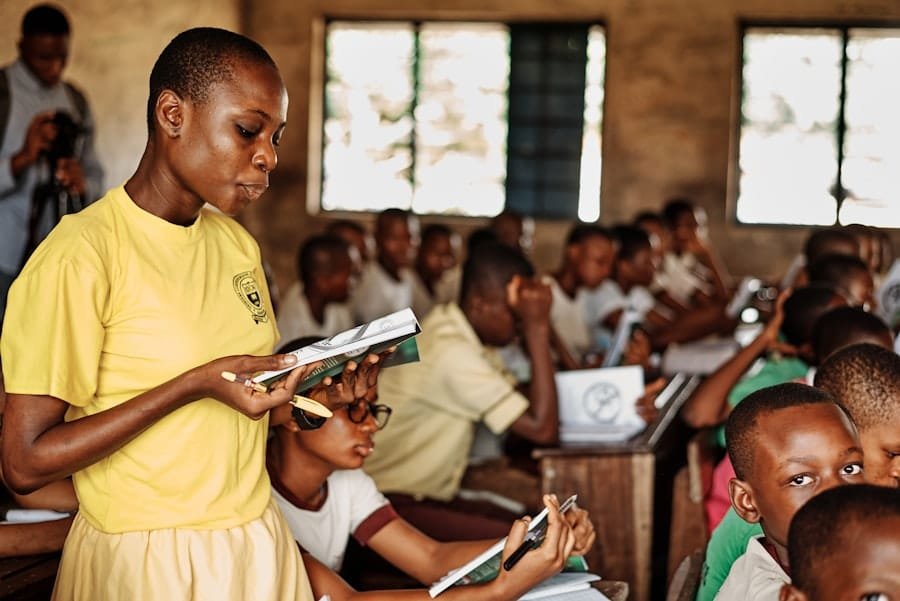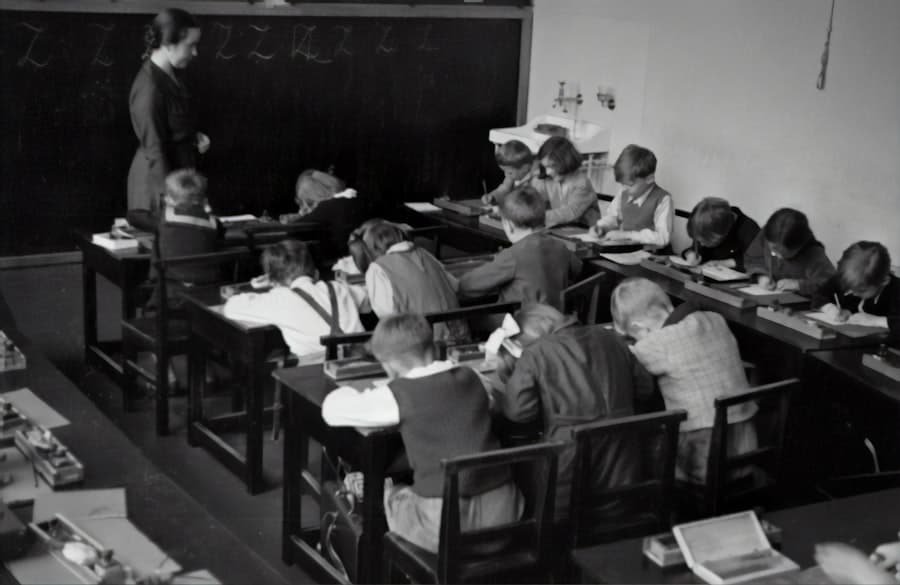In the realm of education, recognising the unique needs of each student is paramount. Every learner comes with a distinct set of experiences, backgrounds, and learning styles that shape their educational journey. For instance, a student who has recently moved to a new country may face challenges not only in adapting to a new curriculum but also in overcoming language barriers.
Understanding these individual circumstances allows educators to create a more inclusive environment that caters to diverse needs. This understanding extends beyond academic requirements; it encompasses emotional and social factors that can significantly impact a student’s ability to learn effectively. Moreover, educators must engage in active listening and observation to truly grasp the needs of their students.
This can involve conducting surveys, holding one-on-one discussions, or simply being attentive to classroom dynamics. For example, a teacher might notice that a particular student struggles with group work due to shyness or anxiety. By recognising these traits, the teacher can implement strategies that encourage participation without overwhelming the student.
This tailored approach not only fosters a sense of belonging but also empowers students to take ownership of their learning experiences.
Summary
- Understanding the needs of each student is crucial for effective teaching and learning
- Adapting learning materials and pace to suit individual students can enhance their understanding and retention
- Tailoring feedback and assessment to each student’s learning style and abilities can improve their performance
- Identifying strengths and weaknesses in students can help in providing targeted support and guidance
- Providing individualised support can help students overcome challenges and reach their full potential
- Encouraging engagement and motivation can foster a positive learning environment and improve student outcomes
- Tracking progress and growth is essential for monitoring student development and adjusting teaching strategies
- Fostering lifelong learning and skills can empower students to continue their educational journey beyond the classroom
Adapting Learning Materials and Pace
Once educators have a firm grasp on the individual needs of their students, the next step is to adapt learning materials and the pace of instruction accordingly. This process involves curating resources that resonate with various learning styles—be it visual, auditory, or kinesthetic. For instance, a student who excels in visual learning may benefit from infographics and videos, while another who learns best through hands-on activities might thrive with practical experiments or interactive simulations.
By diversifying the materials used in the classroom, teachers can ensure that all students have access to content that aligns with their preferred learning modalities. In addition to varying materials, adjusting the pace of instruction is crucial for accommodating different learners. Some students may grasp concepts quickly and require additional challenges, while others may need more time to fully understand the material before moving on.
For example, in a mathematics class, a teacher might introduce advanced problem sets for those who demonstrate proficiency while providing additional support and practice for those who are still mastering foundational skills. This differentiated pacing not only enhances comprehension but also fosters a sense of achievement among students, as they progress at a rate that suits their individual capabilities.
Tailoring Feedback and Assessment

Feedback and assessment are integral components of the learning process, yet they must be tailored to meet the diverse needs of students. Traditional assessment methods often fail to capture the full spectrum of a student’s abilities and understanding. Therefore, educators should consider employing a variety of assessment techniques that reflect individual learning paths.
For instance, while standardised tests may provide some insights into a student’s knowledge, alternative assessments such as portfolios, presentations, or peer evaluations can offer a more comprehensive view of their skills and progress. Furthermore, feedback should be constructive and personalised, focusing on specific areas for improvement rather than general comments. A student who receives feedback on their writing might benefit from detailed suggestions regarding structure, vocabulary, and coherence rather than a vague remark about needing to “improve”.
This specificity not only guides students in their learning but also encourages them to engage with the feedback actively. By fostering an environment where feedback is seen as a tool for growth rather than criticism, educators can motivate students to strive for excellence and take pride in their achievements.
Identifying Strengths and Weaknesses
A critical aspect of personalised education lies in the ability to identify each student’s strengths and weaknesses accurately. This process often begins with initial assessments that gauge students’ skills across various subjects. However, ongoing observation and interaction are equally important in this endeavour.
For example, a teacher might notice that a student excels in creative problem-solving during group activities but struggles with rote memorisation in subjects like history or science. Recognising these patterns enables educators to tailor their teaching strategies effectively. Once strengths and weaknesses are identified, educators can leverage this information to create targeted interventions.
A student who demonstrates strong analytical skills but lacks confidence in public speaking might benefit from opportunities to present their ideas in smaller groups before addressing the entire class. Conversely, a student who excels in verbal communication but struggles with written expression could be encouraged to express their thoughts verbally before translating them into written form. By focusing on individual strengths while addressing weaknesses, educators can foster a more balanced skill set among their students.
Providing Individualised Support
Individualised support is essential for fostering an environment where all students can thrive. This support can take many forms, from one-on-one tutoring sessions to tailored learning plans that outline specific goals and strategies for each student. For instance, a student with dyslexia may require specialised reading interventions that utilise multisensory approaches to enhance their literacy skills.
By providing such targeted support, educators can help students overcome barriers to learning and achieve their full potential. Additionally, collaboration with specialists such as educational psychologists or special education teachers can further enhance individualised support efforts. These professionals can offer valuable insights into effective strategies for accommodating diverse learning needs within the classroom.
For example, they may recommend specific assistive technologies or teaching methods that have proven successful for similar students. By working together as a team, educators can create a comprehensive support system that addresses the multifaceted needs of each learner.
Encouraging Engagement and Motivation

Engagement and motivation are critical factors in the learning process; without them, even the most well-designed lessons can fall flat. To foster engagement, educators must create an environment that is stimulating and relevant to students’ lives. This can involve incorporating real-world applications into lessons or allowing students to explore topics that interest them within the curriculum framework.
For instance, a science teacher might encourage students to investigate local environmental issues as part of their coursework, thereby making learning more meaningful and applicable. Moreover, recognising and celebrating student achievements—no matter how small—can significantly boost motivation levels. Acknowledging effort alongside success helps cultivate a growth mindset among learners.
For example, implementing a reward system that recognises not just high grades but also improvement and perseverance can inspire students to push through challenges. When students feel valued for their efforts and see tangible results from their hard work, they are more likely to remain engaged and motivated throughout their educational journey.
Tracking Progress and Growth
Monitoring student progress is essential for ensuring that individualised approaches are effective and beneficial. Regular assessments—both formal and informal—allow educators to gauge how well students are grasping concepts and where adjustments may be necessary. For instance, formative assessments such as quizzes or reflective journals can provide immediate feedback on student understanding and inform instructional decisions moving forward.
In addition to academic progress, tracking social-emotional growth is equally important. Educators should consider implementing tools such as self-assessment surveys or goal-setting exercises that encourage students to reflect on their personal development over time. By fostering an environment where self-reflection is valued, educators empower students to take an active role in their learning journeys.
This holistic approach not only enhances academic performance but also nurtures essential life skills such as resilience and self-awareness.
Fostering Lifelong Learning and Skills
Ultimately, the goal of education extends beyond mere academic achievement; it encompasses the cultivation of lifelong learners equipped with essential skills for success in an ever-changing world. To foster this mindset, educators must instil curiosity and a love for learning within their students. This can be achieved by encouraging exploration and critical thinking rather than rote memorisation of facts.
For example, project-based learning initiatives allow students to delve deeply into subjects of interest while developing problem-solving skills that will serve them well beyond the classroom. Furthermore, integrating skills such as collaboration, communication, and adaptability into the curriculum prepares students for future challenges in both personal and professional contexts. By creating opportunities for group work and peer-to-peer learning experiences, educators help students develop interpersonal skills that are vital in today’s interconnected society.
As they navigate diverse perspectives and work towards common goals, learners not only enhance their academic abilities but also cultivate essential life skills that will benefit them throughout their lives. In conclusion, understanding the needs of each student is foundational to creating an effective educational experience tailored to individual strengths and weaknesses. By adapting materials and pacing instruction accordingly while providing personalised feedback and support, educators can foster engagement and motivation among learners.
Tracking progress holistically ensures that both academic growth and social-emotional development are nurtured, ultimately leading to the cultivation of lifelong learners equipped with essential skills for success in an ever-evolving world.
In addition to the advancements in AI personalizing education for students, businesses can also benefit from understanding the basics of currency trading. This article on Currency Trading Basics: 4 Winning Strategies provides valuable insights into how companies can navigate the complexities of the foreign exchange market. By implementing these strategies, businesses can make informed decisions to maximise their profits and minimise risks. Understanding currency trading can be a valuable skill for any business looking to expand internationally.
FAQs
What is AI in education?
AI in education refers to the use of artificial intelligence technology to personalize and enhance the learning experience for students. This can include adaptive learning platforms, intelligent tutoring systems, and virtual teaching assistants.
How is AI personalizing education for students?
AI is personalizing education for students by analyzing their learning patterns and preferences to provide tailored learning materials and feedback. This can help students learn at their own pace and in a way that suits their individual needs.
What are the benefits of AI in education?
Some benefits of AI in education include personalized learning experiences, improved student engagement, and the ability to provide real-time feedback to students. AI can also help educators identify areas where students may need additional support.
Are there any concerns about AI in education?
Some concerns about AI in education include data privacy and security, the potential for bias in algorithms, and the impact on teacher-student relationships. It is important to carefully consider these issues when implementing AI in educational settings.
How is AI being used in the classroom?
AI is being used in the classroom through adaptive learning platforms, virtual teaching assistants, and intelligent tutoring systems. These technologies can help educators deliver personalized learning experiences and support student learning.
